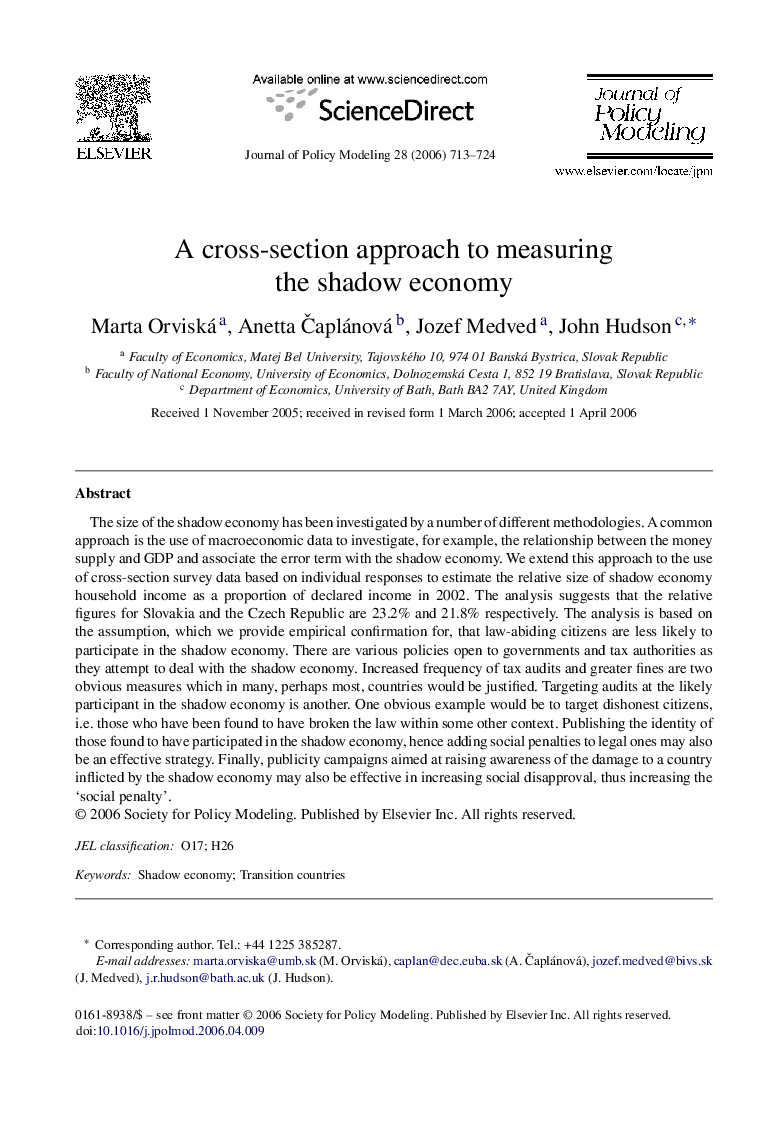| کد مقاله | کد نشریه | سال انتشار | مقاله انگلیسی | نسخه تمام متن |
|---|---|---|---|---|
| 969450 | 931757 | 2006 | 12 صفحه PDF | دانلود رایگان |

The size of the shadow economy has been investigated by a number of different methodologies. A common approach is the use of macroeconomic data to investigate, for example, the relationship between the money supply and GDP and associate the error term with the shadow economy. We extend this approach to the use of cross-section survey data based on individual responses to estimate the relative size of shadow economy household income as a proportion of declared income in 2002. The analysis suggests that the relative figures for Slovakia and the Czech Republic are 23.2% and 21.8% respectively. The analysis is based on the assumption, which we provide empirical confirmation for, that law-abiding citizens are less likely to participate in the shadow economy. There are various policies open to governments and tax authorities as they attempt to deal with the shadow economy. Increased frequency of tax audits and greater fines are two obvious measures which in many, perhaps most, countries would be justified. Targeting audits at the likely participant in the shadow economy is another. One obvious example would be to target dishonest citizens, i.e. those who have been found to have broken the law within some other context. Publishing the identity of those found to have participated in the shadow economy, hence adding social penalties to legal ones may also be an effective strategy. Finally, publicity campaigns aimed at raising awareness of the damage to a country inflicted by the shadow economy may also be effective in increasing social disapproval, thus increasing the ‘social penalty’.
Journal: Journal of Policy Modeling - Volume 28, Issue 7, October 2006, Pages 713–724